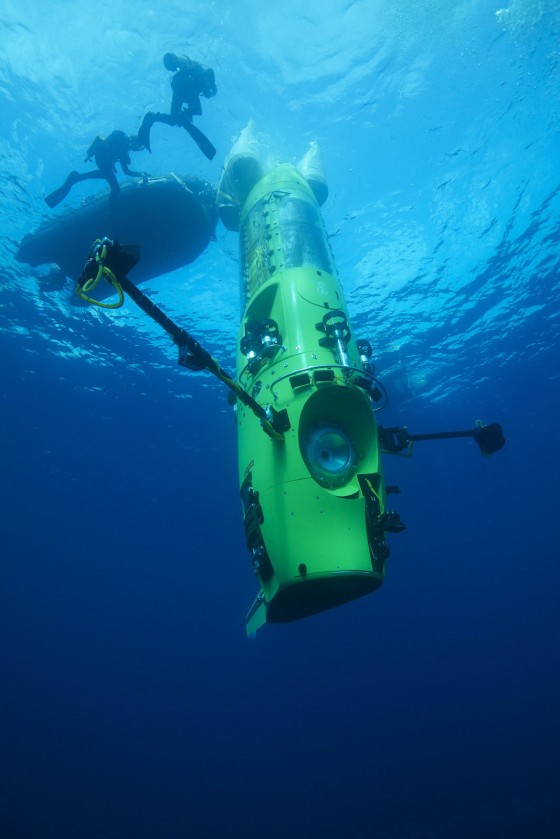James Cameron Headed to the Deepest Point of the Ocean for New Doc
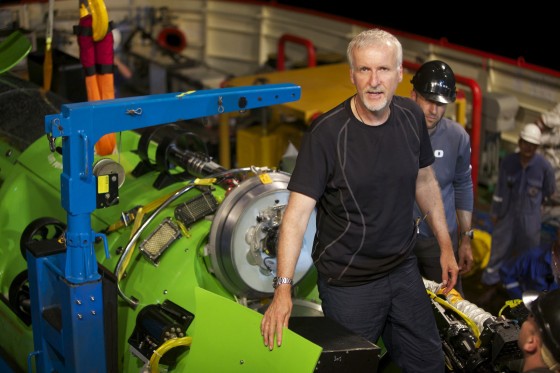
Filmmaker and ocean explorer James Cameron is headed back into the water. This time he is teaming up with National Geographic and headed to the Mariana Trench, which is the deepest and darkest point in the ocean. Cameron will travel 7-miles down in a specially designed submarine.
This is all part of a 3D documentary that Cameron is making called Deepsea Challenge. And the point of it is to expand our knowledge and understanding of these largely unknown parts of the planet. He'll spend 6 hours down there collecting information and doing research, a lot of which might end up on the big screen in the Avatar sequels.
Here's some more information from the official press release:
Cameron’s historic "Deepsea Challenge" expedition will be the first extensive scientific exploration by a manned vehicle to the Mariana Trench's lowest point, the "Challenger Deep." Cameron plans to spend six hours at the bottom of the Pacific Ocean trench, some 200 miles (322 km) southwest of Guam, to collect samples for research in marine biology, microbiology, astrobiology, marine geology and geophysics."
Relying on advanced engineering and technologies created by Cameron and his team, successful field tests were completed this week off the coast of Papua New Guinea. They included untethered deep-water dives — including one to a depth of more than 5 miles (more than 8 km) — in the revolutionary, single-pilot DEEPSEA CHALLENGER submersible, the result of an eight-year engineering effort and the deepest-diving manned marine vehicle in existence. The public will be able to follow Cameron's progress on the expedition at www.DEEPSEACHALLENGE.com; on Twitter by following @DeepChallenge or using #deepseachallenge; or on Facebook athttps://www.facebook.com/deepseachallenge.
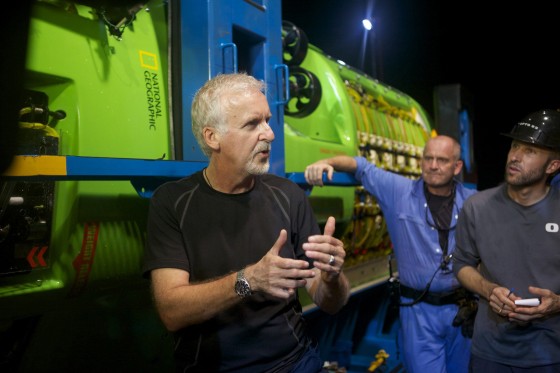
The deep trenches are the last unexplored frontier on our planet, with scientific riches enough to fill a hundred years of exploration. National Geographic, which has been exploring the world for nearly 125 years, is the ideal partner to help usher in a new era of deep-ocean research and exploration that supports leading scientific institutions in answering questions about the deepest, unexplored parts of the Earth. Our goal is to build a scientific legacy for generations to come. It's also to inspire people across the globe to celebrate exploration and to explore with us online and through the media we produce.
Rolex is also a natural partner in this venture — unique in having reached the Challenger Deep 52 years ago and in its celebrated, century-long history of supporting exploration and helping push the boundaries of human and scientific endeavor.
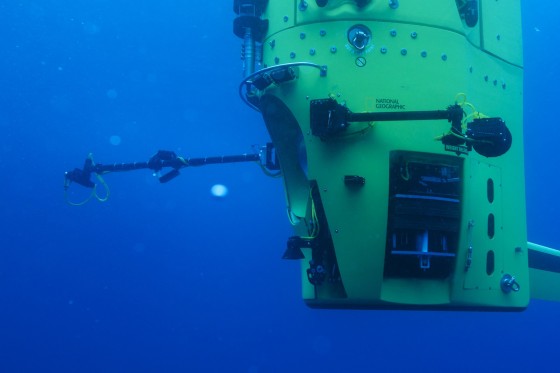
The Challenger Deep has only been reached once in a manned descent, on Jan. 23, 1960, by U.S. Navy Lt. Don Walsh and Swiss oceanographer Jacques Piccard in the bathyscaphe Trieste. They spent approximately 20 minutes on the ocean floor before returning to the surface. Now, 52 years later, Cameron's DEEPSEA CHALLENGER represents breakthroughs in materials science, unique approaches to structural engineering and new ways of imaging through an ultra-small, full ocean depth-rated stereoscopic camera. Cameron's CAMERON | PACE Group, which supplies 3-D technologies and production support services, has provided the capability to document the historic expedition in high-resolution 3-D.
Some believe the golden age of exploration is behind us. On the contrary, I believe we are at the beginning of our greatest age of exploration," said Terry Garcia, National Geographic's executive vice president for Mission Programs. "We salute James Cameron for his commitment to science and exploration, and we are delighted to be part of this groundbreaking adventure to the deepest and least explored point on Earth.
In 1960, an experimental Rolex Deepsea Special watch was attached to the hull of the Trieste and emerged in perfect working order after withstanding the huge pressure exerted at 6.78 miles (nearly 11 km) below the surface. The DEEPSEA CHALLENGER submersible will carry a new experimental wristwatch, the Rolex Deepsea Challenge, strapped to its manipulator arm, renewing the pioneering engineering challenge the Swiss watchmaker took up 52 years ago with the Trieste.
Our affinity with the deep also extends to active and sustained support of renowned marine researchers, supporting excellence and innovation in the advancement of human knowledge," said Gian Riccardo Marini, Chief Executive Officer of Rolex SA. "I am convinced that James Cameron is bringing us to the threshold of a long-delayed revival in marine exploration. We are proud to have such a passionate and longstanding admirer of Rolex, and to return to the Challenger Deep on this historic venture to help unravel the secrets of the ocean's deepest places.
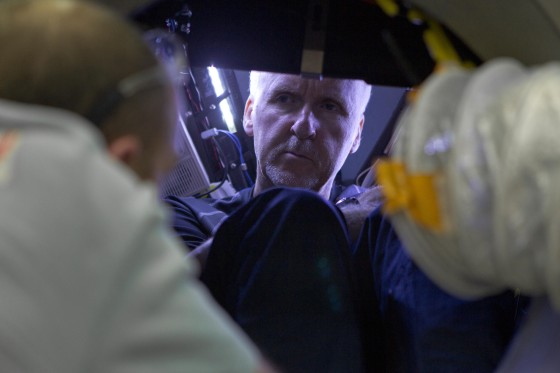
Cameron was named a National Geographic Explorer-in-Residence in 2011. While working on his film "Titanic," he took 12 submersible dives to the famed shipwreck two and a half miles down in the North Atlantic. The technical success of that expedition led Cameron to form Earthship Productions, which develops films about ocean exploration and conservation. Since then he has led six expeditions, authored a forensic study of the Bismarck wreck site and done extensive 3-D imaging of deep hydrothermal vent sites along the Mid-Atlantic Ridge, the East Pacific Rise and the Sea of Cortez. Cameron has made 72 deep submersible dives, including 33 to Titanic. Fifty-one of these dives were in Russian Mir submersibles to depths of up to 3.03 miles (4.87 km).
Cameron has written and directed numerous films, among them "Avatar," "Titanic," "True Lies," "Terminator 1 and 2," "The Abyss" and "Aliens." His films have blazed new trails in visual effects and have set numerous performance records, both domestically and abroad, including 11 Oscars for "Titanic." "Avatar," a 3-D science fiction epic reflecting five years of development of new production technologies, was nominated for nine Oscars and won three. "Avatar" is the highest-grossing film in history, surpassing the previous record holder, "Titanic."
The DEEPSEA CHALLENGE expedition will be chronicled for a 3-D feature film for theatrical release on the intensive technological and scientific efforts behind this historic dive, which will subsequently be broadcast on the National Geographic Channel, and documented for National Geographic magazine. Cameron also will collaborate with National Geographic to create broad-based educational outreach materials.
Scripps Institution of Oceanography, UC San Diego, is the DEEPSEA CHALLENGE Project's primary science collaborator. For nearly a decade, Scripps has been involved with James Cameron in developing new ways to explore and study the deepest parts of the oceans. With its decades-long history of deep-sea exploration, Scripps is recognized as a world leader in investigating the science of the deep ocean, from exploring the deep's geological features to researching its exotic marine life inhabitants.
The expedition also is collaborating with the University of Hawaii, Jet Propulsion Laboratory and the University of Guam. Additional funding for education and digital outreach has been provided by the Alfred P. Sloan Foundation, which supports original research and public understanding of science, technology, engineering and mathematics.
Scientific research permits for the dive have been secured from authorities in the Federated States of Micronesia.
